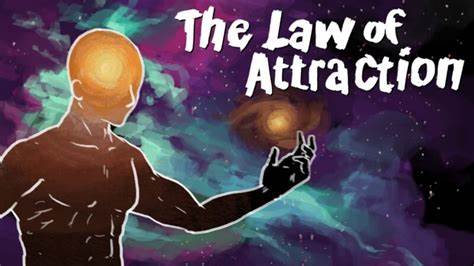Part One
Introduction
The blog aims to explore the definitions and differences between personal spirituality and belief systems.

Personal spirituality and belief systems are intertwined concepts, yet they differ in their approach to individual experience and collective tradition. Personal spirituality is a broad term that often encompasses an individual’s sense of connection to something greater than oneself, manifesting in various forms such as a sense of peace, purpose, or understanding of one’s place in the cosmos. This sense of connection doesn’t necessarily tie to organised practices or doctrines. Still, it is a deeply personal, subjective experience moulded by individual life experiences, reflections, and innermost feelings. As such, personal spirituality is less about adhering to external religious structures and more about personal growth, self-understanding, and the quest for inner peace and meaning.
In contrast, belief systems, particularly in spirituality and religion, generally refer to a set of principles or tenets shared by a community or group. These systems offer a structured approach to understanding the metaphysical, often including doctrines about the nature of the divine, moral codes, and rituals. While personal spirituality can be fluid and evolving, belief systems tend to be more static, providing a community with a stable framework of ideas and practices to guide spiritual understanding and communal identity. Despite these differences, personal spirituality and belief systems serve similar purposes: to provide meaning, comfort, guidance, and a sense of belonging in the grand tapestry of human existence.
The increasing interest in personal spirituality in contemporary society.
In contemporary society, there has been a discernible surge in interest towards personal spirituality, reflecting a growing trend of individuals seeking fulfilment beyond material success and conventional religious practices. This shift is part of a broader cultural movement towards self-discovery and existential exploration, where people more openly embrace diverse, eclectic spiritual experiences that resonate with their journeys. As traditional institutions face scrutiny and individuals yearn for deeper authenticity in their lives, personal spirituality has become a means for many to cultivate inner peace, purpose, and a sense of interconnectedness with life’s mysteries on their terms. This increasing engagement with spirituality on a personal level indicates a cultural expansion beyond the boundaries of structured religion, signalling a transformation in how modern individuals approach the profound questions of existence and purpose.
Covered in the blog
In this blog, we will cover the following topics: Understanding Spirituality, Religion vs. Spirituality, Belief Systems in Spirituality, Types and Examples of Spiritual Practices, The Personal Nature of Spirituality, Identifying and Developing Personal Belief Systems, The Impact of Spirituality on Daily Life, Frequently Asked Questions, Conclusion, References, and Further Reading.
Understanding Spirituality
Definition of Spirituality
Spirituality involves the recognition of a feeling or sense or belief that there is something greater than myself, something more to being human than sensory experience and that the greater whole of which we are part is cosmic or divine. Spirituality means knowing that our lives have significance in a context beyond a mundane everyday existence at the level of biological needs that drive selfishness and aggression. It means knowing that we are a significant part of a purposeful unfolding of Life in our universe. Spirituality involves exploring specific universal themes – love, compassion, altruism, life after death, wisdom and truth, with the knowledge that some people, such as assaints or enlightened individuals, have achieved and manifested higher levels of development than the ordinary person. Aspiring to manifest the attributes of such inspirational examples often becomes an essential part of the journey through life for spiritually inclined people. As written by Dr Mayar Spencer.
https://www.rcpsych.ac.uk/docs/default-source/members/sigs/spirituality-spsig/what-is-spirituality-maya-spencer-x.pdf?sfvrsn=f28df052_2
Spirituality as an individual practice versus organised religion
Spirituality as an individual practice is an intimate quest for understanding and connection with the transcendent, often characterised by a deeply personal exploration of one’s values, principles, and inner landscape. Unlike organised religion, which typically involves communal worship, shared beliefs, codified doctrines, and formal rituals, personal spirituality is more about the subjective journey and individual experience. It’s a path that allows one to contemplate life’s mysteries, seek personal truths, and form a unique, often eclectic relationship with the divine or the spiritual aspect of existence without the mediation of established religious institutions. While organised religions can provide community and a sense of belonging, individual spirituality is marked by autonomy and liberty, allowing one to navigate the spiritual realm with personal intuition and direct experience as one’s guide.
Various examples of personal spirituality in daily life.
Signs of spirituality often manifest as a constellation of introspective and interpersonal behaviours that signal a deeper engagement with the existential aspects of life. Individuals may find themselves curious about profound questions, such as the nature of suffering or the mysteries that lie beyond death—a quest often arising from a yearning to understand the broader human experience and our place within it. This spiritual curiosity can foster a profound empathy and a sense of interconnectedness with others, leading to deeper connections that transcend superficial interactions. Acts of compassion become more frequent as spiritually inclined individuals often feel a compelling drive to alleviate the suffering of others, embodying a sense of universal kinship. This empathetic stance extends beyond human relations, usually influencing a person’s interaction with all life forms and the environment. Collectively, these signs point to a budding or deep-seated spirituality that moulds one’s actions and worldview, prioritising the quest for meaning and a harmonious existence over material or immediate concerns. This spiritual awakening can prompt a transformative journey, influencing everything from mundane daily choices to significant life decisions as individuals seek to align their external lives with their inner spiritual values.
Religion and spirituality are related concepts but have different characteristics and can be experienced independently. Here are vital distinctions, along with sources for further reading:
1. Institutional vs. Personal:
Religion is often institutional and organized, with a set structure that involves specific doctrines, rituals, and ceremonies. It usually has a leadership hierarchy and a defined membership.
Spirituality is more personal and individualized. It does not require formal affiliation or an institutional framework. It’s about one’s inner path and may or may not include traditional religious beliefs or practices.
2. Community vs. Individual:
Religion tends to create community among its members, providing a sense of belonging and identity through shared beliefs and practices.
Spirituality is more about the individual’s relationship with the sacred or transcendent, which may lead to a personal transformation or sense of peace and connectedness.
3. Doctrine vs. Experience:
Religious adherence often includes accepting a set of beliefs as truth and following the doctrinal teachings of the religion.
Spiritual practice is commonly based on personal experiences and feelings. It emphasizes one’s own intuition and understanding of the divine or ultimate reality.
4. Rituals vs. Practices:
Religions usually involve prescribed rituals meant to connect individuals to the divine or a religious community.
Spiritual practices tend to be more fluid and can include a variety of activities, such as meditation, mindfulness, nature walks, or journaling, that are tailored to the individual’s growth.
5. Exclusivity vs. Inclusivity:
Many religions claim exclusivity on truth and may require adherence to a specific ideology or worldview.
Spirituality is often inclusive and can incorporate diverse beliefs and practices from various religions or none at all.
For further reading on these topics, you may explore the following sources:
“Religion vs. Spirituality: Understanding the Difference”by Richa Tiwari on LinkedIn: [www.linkedin.com/pulse/religion-vs-spirituality-understanding-difference-richa-tiwari/](https://www.linkedin.com/pulse/religion-vs-spirituality-understanding-difference-richa-tiwari/)
“The Difference Between Spirituality and Religion” by Deepak Chopra: [chopra.com](https://chopra.com/articles/what-is-the-difference-between-religion-and-spirituality)
“Spirituality”, Wikipedia: [en.wikipedia.org/wiki/Spirituality](https://en.wikipedia.org/wiki/Spirituality)
“Critical Literature Review on the Definition Clarity of the Concept of Faith, Religion, and Spirituality” in the Journal of Holistic Nursing: [doi.org/10.1177/0898010119895368](https://doi.org/10.1177/0898010119895368)
“What’s the difference between religion and spirituality?” [www.bgsu.edu/arts-and-sciences/psychology/graduate-program/clinical/the-psychology-of-spirituality-and-family/relational-spirituality/defining-religion-and-spirituality.html](https://www.bgsu.edu/arts-and-sciences/psychology/graduate-program/clinical/the-psychology-of-spirituality-and-family/relational-spirituality/defining-religion-and-spirituality.html)
These resources should provide a more in-depth understanding of the nuances between religion and spirituality.
Religion and spirituality, while overlapping in many aspects, tend to diverge regarding their communal versus individualised expressions. Here is an exploration of both:
Community-Based Nature of Religion
- Collective Worship: Religions often involve congregational practices where groups of people come together to perform rituals, celebrate holidays, and worship.
- Structured Beliefs: Religions generally have specific doctrines and teachings codified in texts and interpreted by religious leaders.
- Identity and Belonging: Being part of a religion can give individuals a strong sense of identity and community belonging, bonded together by shared beliefs, moral values, and traditions.
- Organizational Hierarchy: Most religions have a hierarchical structure, with religious leaders guiding the community’s practices and beliefs.
- Cultural and Societal Impact: Religious institutions have historically shaped societies and cultures, influencing laws, morals, and social norms.
- Education and Transmission: Religions often have established methods for teaching beliefs and practices to new generations, typically within a community context.
For additional insight into the community-based aspects of religion, you might consider the works of sociologist Émile Durkheim, particularly his book “The Elementary Forms of the Religious Life,” which discusses the social functions of religion.
Individualised Nature of Spirituality:
- Personal Practice: Spirituality is often characterised by individual practices aimed at personal growth and self-understanding, like meditation, journaling, or silent contemplation.
- Flexible Beliefs: Those who identify as spiritual but not religious often embrace a fluid set of beliefs that can draw from multiple traditions or be entirely self-constructed.
- Subjective Experience: Spirituality places high value on personal experiences and inner feelings in the quest for a connection with something larger than oneself, which may or may not include the concept of a deity.
- Personal Transformation: Spirituality is often oriented toward personal transformation and enlightenment, emphasising the individual’s journey towards self-realisation or a higher state of consciousness.
- Responsiveness to Change: Individual spirituality can adapt and change throughout a person’s life, evolving with new experiences, insights, and maturity.
- Community Optional: While spirituality can be practised within a group or community, it is not dependent on it. Communities centred around spirituality tend to be more loosely structured and often focus on supporting their members’ spiritual journeys rather than adhering to a common doctrine.
For more on the individualised aspects of spirituality, you may refer to “The Seat of the Soul” by Gary Zukav or “Care of the Soul” by Thomas Moore, both of which explore spirituality from a personal perspective.
Understanding the distinction between the communal aspects of religion and the individualised nature of spirituality helps to highlight why some people engage with one, the other, or both. Here is the link to a relevant node addressing these differences within the broader context of defining personal spirituality and belief systems: [Community-Based Aspects of Religion vs Individualized Nature of Spirituality](https://www.taskade.com/d/MEWu4cGcBuB6a12x#node-e6c94ab3-b291-4c4b-916e-d85d129c9509).
Within the context of spirituality,
A belief system is often a set of principles or ideas that an individual holds to be true concerning the nature of reality, the existence of the divine, or the deeper meaning and purpose of life. These beliefs form the backbone of an individual’s spirituality and can influence their perception of the world, ethical conduct, and practices. Here’s an outline of what may constitute a spiritual belief system:
1. Existential Beliefs: Fundamental ideas about the nature of existence, life after death, the soul, and the purpose of human life.
2. Metaphysical Ideas: Beliefs concerning the nature of reality that go beyond the physical world, including the concept of the divine, higher powers, spiritual realms, or other dimensions of existence.
3. Values and Morality: Ethical and moral principles that guide behavior and decision-making, often influenced by an individual’s spiritual outlook, such as compassion, non-violence, love, and service.
4. Sacred Practices: Rituals, practices, or disciplines that help individuals connect with, understand, or honor their spiritual beliefs, such as meditation, prayer, fasting, or mindful living.
5. Personal Enlightenment: The pursuit of personal growth, wisdom, understanding, and self-realization, which may involve learning specific teachings, engaging in personal reflection, or seeking transcendent experiences.
6. Relationship with the Sacred: The nature of the relationship between the individual and the divine or sacred, which can range from personal communion to a belief in an impersonal cosmic force.
7. Community and Fellowship: While not as institutionalized as in religion, some spiritual belief systems may also include a sense of community with like-minded individuals who share similar spiritual perspectives or practices.
8. Sources of Guidance: Reference points or authorities in one’s spiritual system, which can include sacred texts, spiritual leaders or mentors, personal intuition, or inner experiences.
9. Cosmology: Beliefs about the creation and structure of the universe and the human role within it, which can be influenced by scientific understanding, mythological narratives, or direct spiritual insight.
10. Ritual and Symbol: The use of symbols, rituals, and stories that express and embody the spiritual beliefs, values, and practices of a person.
The specific content of a spiritual belief system is highly individual. It can be shaped by a wide range of influences, including religious background, personal experiences, philosophical inquiry, and cultural context. For someone deeply engaged in spirituality, their belief system is often an evolving construct that adapts as they grow and learn throughout their life.
To gain more insight into the nature of belief systems in spirituality, you can explore the following sources that provide various perspectives:
“The Power of Myth” by Joseph Campbell, which delves into myths and their role in human belief systems.
“The Spiritual Brain: A Neuroscientist’s Case for the Existence of the Soul” by Mario Beauregard and Denyse O’Leary, exploring the intersection of neuroscience and spirituality.
“The Perennial Philosophy” by Aldous Huxley, presenting a comparative study of mystical traditions, which can be seen as underlying various spiritual belief systems. – “This book has been an extraordinary read, densely packed with invaluable insights that have profoundly expanded my understanding and appreciation of the subject. It’s not just a great resource—it’s a treasure trove of knowledge that I find myself returning to time and again.”
Understanding belief systems in spirituality requires recognizing that they are not just sets of ideas but are lived experiences that deeply impact an individual’s understanding of life and existence. If you wish to delve deeper into creating or understanding your spiritual belief systems, you can refer to this source within the project context: [Defining Personal Spirituality and Belief Systems](https://www.taskade.com/d/MEWu4cGcBuB6a12x#node-1c976215-2bf2-4b12-877d-afb9f6b4e65e).
How belief systems are formed and their role in personal spirituality.
Belief systems are typically formed through a complex interplay of cultural, familial, personal, and existential influences. They evolve as individuals encounter new experiences, gain knowledge, and reflect on their place in the world. Here’s an outline of how belief systems are formed and their significance in personal spirituality:
1. Cultural and Familial Influences: Many aspects of a belief system are inherited from the culture and family in which one is raised. Religious traditions, moral values, and worldviews are often passed down through generations, providing a starting framework for an individual’s belief system.
2. Personal Experience: Individual experiences shape belief systems. This includes life-changing events, such as the loss of a loved one and everyday interactions and relationships. Such experiences can affirm, challenge, or reshape one’s spiritual beliefs.
3. Education and Knowledge: Exposure to different ideas through education, reading, and dialogue can significantly influence one’s belief system. Learning about various philosophies, sciences, religions, and cultures can lead to a broader understanding of the world and reevaluating previously held beliefs.
4. Existential Searching: A natural part of human existence is grappling with fundamental questions about purpose, identity, and morality. The search for answers to these questions can lead to developing a belief system that provides personal meaning and understanding.
5. Spiritual Experiences: Some individuals report experiences they interpret as spiritual or transcendent, such as a profound connection with nature, moments of enlightenment, or feelings of oneness. Such experiences can be powerful catalysts in the formation of belief systems.
6. Reflective Practices: Meditation, prayer, or contemplation can deepen spiritual explorations and solidify beliefs. Through reflection, individuals can arrive at insights that form the basis of their belief systems.
7. Role Models and Mentors: Influence from individuals who embody certain spiritual principles or beliefs can inspire and shape one’s belief system. This can include spiritual leaders, teachers, or authors whose works resonate on a personal level.
8. Communities and Groups: Interaction with various communities and social groups that share or discuss spiritual beliefs can contribute to and reinforce one’s belief system.
In terms of their role in personal spirituality:
Framework for Understanding: Belief systems provide a framework for making sense of the world and one’s experiences. They help individuals interpret and assign meaning to their lives.
- Guidance and Decision Making: Belief systems guide living, making decisions, and determining right from wrong. They can influence behaviours, goals, and how one responds to life’s challenges.
- Source of Comfort and Strength: For many, belief systems are a source of comfort in times of stress or uncertainty. They provide an anchor and a sense of stability.
- Connection and Community: Shared belief systems can lead to a sense of connection with others with similar views, contributing to a sense of belonging and community.
- Personal Identity: Belief systems are integral to personal identity. They can influence how individuals present themselves and interact with the world.
- Moral and Ethical Living: Personal spirituality, informed by one’s belief system, often emphasises living a moral and ethical life. This can manifest in practices promoting personal well-being, social justice, and compassionate action toward others.
For further exploration into how belief systems are formed and their role in personal spirituality, consider reading “The Biology of Belief” by Bruce H. Lipton, which offers an alternative look at how our understanding of biology can influence our beliefs.
Additionally, within the context of your spiritual journey or for those you may guide, the development of belief systems is an ongoing process of adaptation and growth, continuously shaped by new insights and experiences. The node on belief systems in the project (https://www.taskade.com/d/MEWu4cGcBuB6a12x#node-c295449d-864e-4c2c-8494-da2bbeb54f05) offers further structure and information on this topic.
The importance of personal spiritual beliefs in giving meaning to life experiences.
1 Life’s Purpose and Direction: Personal spiritual beliefs can give individuals a sense of purpose and direction. They provide a narrative or a set of principles that help individuals make sense of their place in the world and their journey, thereby adding a layer of meaning to their actions and experiences.
2. Coping with Adversity: When facing challenges, losses, or suffering, spiritual beliefs can offer solace and strength. They can help individuals find meaning in challenging experiences and provide a sense of hope and resilience.
3. Interconnectedness: Spiritual beliefs often emphasise the interconnectedness of all life forms. This can encourage a sense of unity and empathy with others, leading to more meaningful interactions and a sense of solidarity with the greater whole.
4. Ethical Framework: Spiritual beliefs typically include ethical dimensions that inform how individuals approach moral dilemmas and make choices. Knowing one’s actions are aligned with one’s values can give a greater sense of integrity and meaning to life.
5. Transcendence: Spirituality can involve a quest for transcendence or seeking connections with something greater than oneself, such as a higher power, the universe, or the essence of being. This pursuit can imbue life with a profound sense of meaning and significance.
6. Understanding of Suffering: Spiritual beliefs often deal with the nature of suffering and its role in human life. They can help individuals understand and accept suffering, find meaning in endurance, and overcome hardships.
7. Personal Growth: Spirituality is frequently associated with personal growth and self-improvement. Beliefs that encourage reflection, mindfulness, and the cultivation of virtues such as compassion and patience can lead to a more deeply meaningful and fulfilling life.
8. Legacy and Impact: Spiritual beliefs can influence what individuals consider essential to leave behind, shaping their decisions about the impact they wish to have on others and the world.
9. Ritual and Celebration: The rituals and celebrations that are part of spiritual belief systems can give additional weight to everyday occurrences and significant life events, marking the passage of time with a sense of reverence and importance.
10. Continuity and Change: The evolving nature of personal spirituality can mirror the dynamic course of life, helping individuals to navigate change and maintain a sense of continuity through their beliefs.
The importance of personal spiritual beliefs is not to be underestimated, as they can fundamentally shape the narrative of one’s life. They are the lens through which experiences are interpreted, giving colour and context to every moment. This ongoing synthesis of belief and experience often results in a rich, multidimensional understanding of life that can enhance both internal satisfaction and external relationships.
Types and Examples of Spiritual Practices
Say affirmations aloud.
Smudge yourself to clear your energy.
Pray or share thoughts with the divine.
Read a few pages from a book that feels nourishing to your spirit.
Breathwork.
Meditation or quiet time.
New age spirituality.
Prayer.
Service to their community.
Spending time in nature.
Spiritual retreats.
Yoga.
spiritual self-care
spiritual wellness
Journaling
Inspirational music
Our journey for today concludes here, but anticipate a fresh chapter to unfold tomorrow with part two’s release. Stay tuned!
Thank You For Reading YOU ARE APPRECIATED
Proudly powered by WordPress

Green Fairy
“Preserve your unforgettable moments timelessly!” our Green Fairy Frameless Canvas Prints leverage ultra-high resolution UV printing to deliver rich, crisp, and true-to-life representations of your cherished memories. Constructed from premium, dense yet authentic canvas, these prints offer stunning image quality that endures over the years. Supported by sturdy natural wooden frames equipped with metal hooks, their longevity is assured. They make an exceptional gift to mark any special occasion; a heartfelt keepsake for those you hold dear. Maintenance is straightforward, requiring just a soft brush-off with a feather duster. Please note, prints permit a tolerance of 1-3cm due to varying measurement methods.
A$57.00




